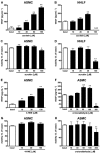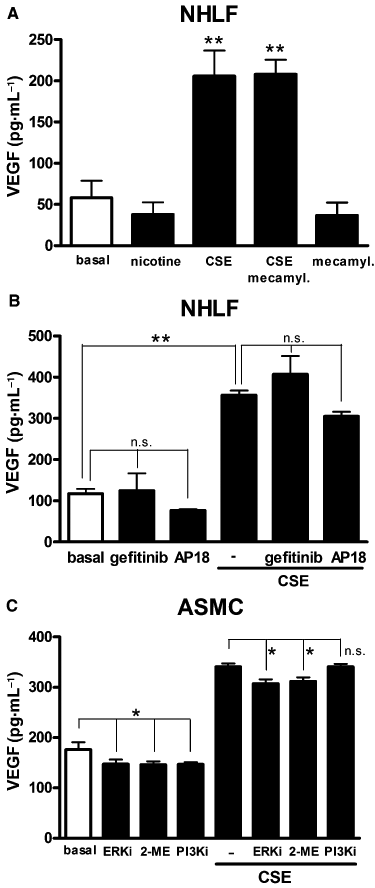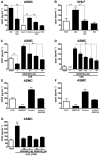Cigarette smoke and α,β-unsaturated aldehydes elicit VEGF release through the p38 MAPK pathway in human airway smooth muscle cells and lung fibroblasts
- PMID: 21306579
- PMCID: PMC3101625
- DOI: 10.1111/j.1476-5381.2011.01253.x
Cigarette smoke and α,β-unsaturated aldehydes elicit VEGF release through the p38 MAPK pathway in human airway smooth muscle cells and lung fibroblasts
Abstract
Background and purpose: Vascular endothelial growth factor (VEGF) is an angiogenic factor known to be elevated in the sputum of asymptomatic smokers as well as smokers with bronchitis type of chronic obstructive pulmonary disease. The aim of this study was to investigate whether acute exposure to cigarette smoke extract altered VEGF production in lung parenchymal cells.
Experimental approach: We exposed human airway smooth muscle cells (ASMC), normal human lung fibroblasts (NHLF) and small airways epithelial cells (SAEC) to aqueous cigarette smoke extract (CSE) in order to investigate the effect of cigarette smoke on VEGF expression and release.
Key results: Vascular endothelial growth factor release was elevated by sub-toxic concentrations of CSE in both ASMC and NHLF, but not in SAEC. CSE-evoked VEGF release was mimicked by its component acrolein at concentrations (10-100 µM) found in CSE, and prevented by the antioxidant and α,β-unsaturated aldehyde scavenger, N-acetylcysteine (NAC). Both CSE and acrolein (30 µM) induced VEGF mRNA expression in ASMC cultures, suggesting an effect at transcriptional level. Crotonaldehyde and 4-hydroxy-2-nonenal, an endogenous α,β-unsaturated aldehyde, stimulated VEGF release, as did H(2)O(2). CSE-evoked VEGF release was accompanied by rapid and lasting phosphorylation of p38 MAPK (mitogen-activated protein kinase), which was abolished by NAC and mimicked by acrolein. Both CSE- and acrolein-evoked VEGF release were blocked by selective inhibition of p38 MAPK signalling.
Conclusions and implications: α,β-Unsaturated aldehydes and possibly reactive oxygen species contained in cigarette smoke stimulate VEGF expression and release from pulmonary cells through p38 MAPK signalling.
© 2011 The Authors. British Journal of Pharmacology © 2011 The British Pharmacological Society.
Figures







References
-
- Alagappan VK, McKay S, Widyastuti A, Garrelds IM, Bogers AJ, Hoogsteden HC, et al. Proinflammatory cytokines upregulate mRNA expression and secretion of vascular endothelial growth factor in cultured human airway smooth muscle cells. Cell Biochem Biophys. 2005;43:119–129. - PubMed
-
- Aldini G, Dalle-Donne I, Colombo R, Maffei Facino R, Milzani A, Carini M. Lipoxidation-derived reactive carbonyl species as potential drug targets in preventing protein carbonylation and related cellular dysfunction. ChemMedChem. 2006;1:1045–1058. - PubMed
-
- Bacher I, Wu B, Shytle DR, George TP. Mecamylamine – a nicotinic acetylcholine receptor antagonist with potential for the treatment of neuropsychiatric disorders. Expert Opin Pharmacother. 2009;10:2709–2721. - PubMed
-
- Bautista DM, Jordt SE, Nikai T, Tsuruda PR, Read AJ, Poblete J, et al. TRPA1 mediates the inflammatory actions of environmental irritants and proalgesic agents. Cell. 2006;124:1269–1282. - PubMed
-
- Birk DM, Barbato J, Mureebe L, Chaer RA. Current insights on the biology and clinical aspects of VEGF regulation. Vasc Endovascular Surg. 2008;42:517–530. - PubMed
Publication types
MeSH terms
Substances
LinkOut - more resources
Full Text Sources

